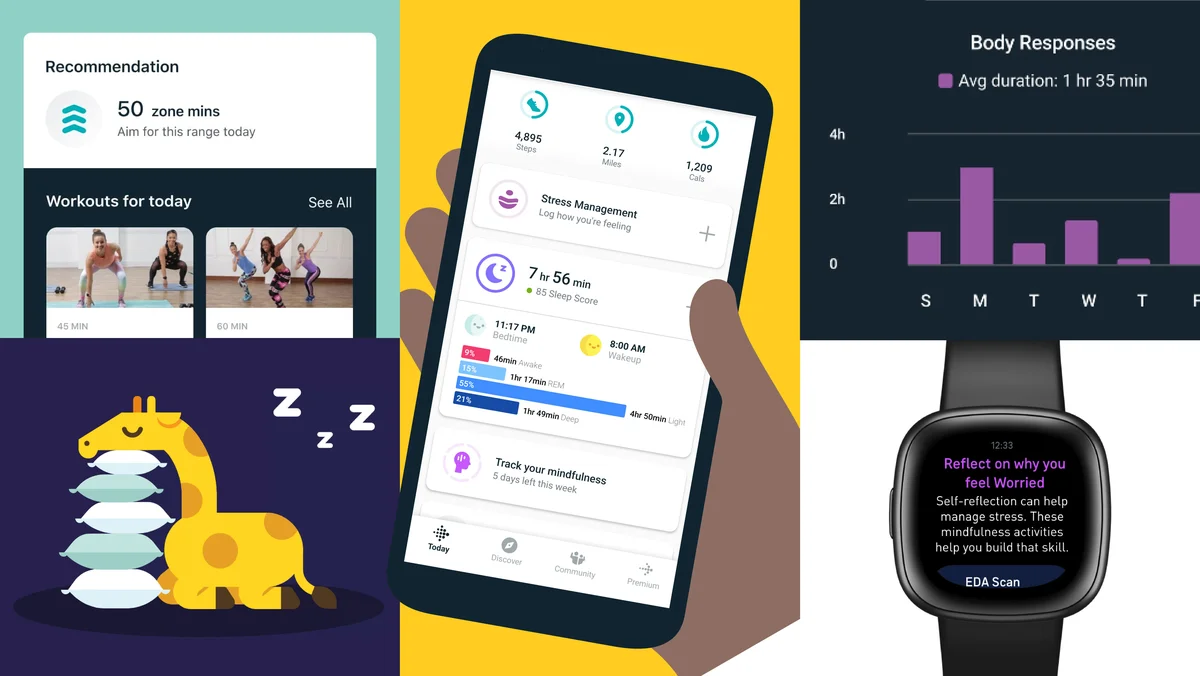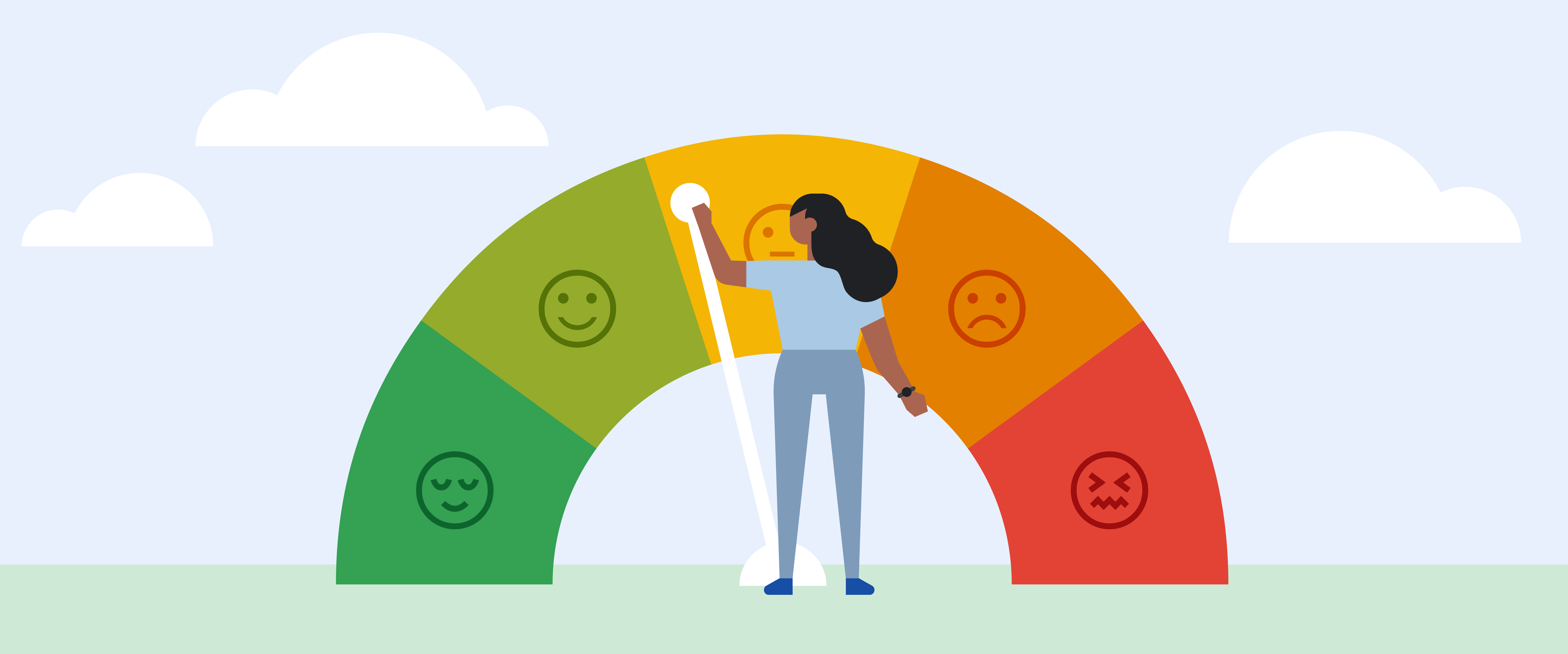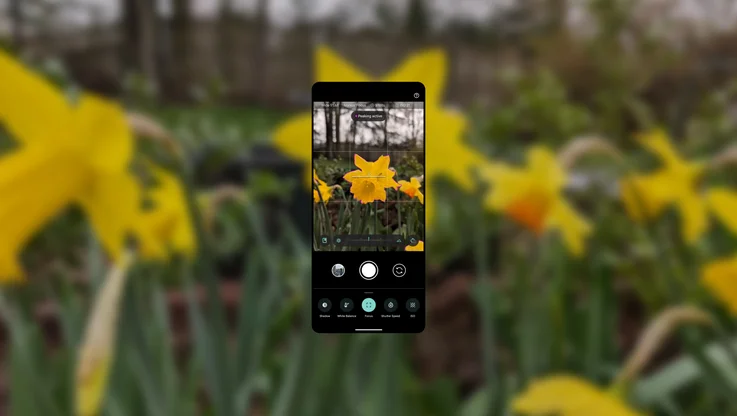3 ways to take better care of your mind and body in 2023

For many people, the month of January is synonymous with New Year's resolutions. Google Search trends back this up: Every January, we see spikes in searches related to making positive changes, particularly around health and wellness, like getting better sleep, reducing stress and increasing fitness.
If you’re setting this kind of health and wellness goal for 2023, try to make it a SMART goal: Specific, Measurable, Achievable, Relevant and Time-bound. Evidence suggests that when people set SMART goals, they’re more likely to follow through on the day-to-day behaviors that add up to change over time. As an example: If setting a totally new goal feels daunting, instead consider setting a goal to maintain or build on the healthy routines you already have, like taking a daily walk, going to sleep at the same time each night, meditating three days a week or calling a friend or family member every day. The idea is to make the goal achievable — the A in SMART.
Something else that can help you achieve your goals: Measuring your progress (the M in SMART). Research shows that when people monitor their progress and behaviors they are more likely to follow through on changes. For example, tracking your activity or sleep with a wearable helps you understand the factors that influence these aspects of your health and wellbeing. Tracking helps you recognize barriers and challenges, and problem-solve ways to maintain the changes you’re trying to make.
Google products like the Pixel Watch, Fitbit and Google Nest can help. Each of these tools has features that provide insights into your body and behaviors. Those insights can help you figure out how best to tackle your goals and feel better in general. Here’s how you can use these tools to make informed health and wellness decisions.
Understand your sleep habits

Fitbit Premium Sleep Profile tracks 10 different rest-related metrics to give you a monthly Sleep Analysis — as well as an animal that most closely matches your recent sleep habits.
There's tons of evidence that getting enough consistent, high-quality sleep is good for your health. So if you have a goal to get better sleep, we've got some tools and services that can help.
One option is the Fitbit Premium Sleep Profile, which is available with the Pixel Watch along with Fitbit Sense 2, Versa4, Charge 5, Luxe and Inspire 3 devices. Sleep Profile tracks 10 different rest-related metrics including bedtime consistency, sleep stability, time spent in deep sleep and the overall length of your slumber. On the first day of each month, you’ll get a Sleep Analysis offering a deep dive into these patterns as long as you wore your device to sleep for at least 14 days the previous month. Understanding your sleep habits with this kind of data can help you pinpoint ways to improve how much you sleep — or how well you sleep.
Sleep quality was an issue for Sebastian Rodriguez, a senior product marketing manager for Pixel. With the help of his Pixel Watch and the Sleep Profile, he realized he felt most rested when he spent more time in the deep rapid eye movement (REM) sleep stage.
So Sebastian started trying to improve how much REM sleep he got. He stopped caffeine consumption later in the day and avoided drinking water before bed. He also read before turning in instead of browsing social media or watching TV. Gradually, he started to feel more well-rested.
If wearing a device to bed isn’t for you but you still want sleep insights, you may want to try the Nest Hub (2nd gen), which offers Sleep Sensing technology. Sleep Sensing uses radars to detect your movement and breathing, noise like snoring and coughing and environmental factors like light and temperature. This can give you clues about how you’re sleeping, including what might be disturbing your rest. Then you can take any necessary action, like buying heavier shades to better keep out light or visiting a doctor to investigate potential causes behind snoring.
Understand your stress reactions

Fitbit Sense 2 can help you get your stress under control with continuous EDA tracking for all-day stress management, and prompts to help you reflect on what might be causing your stress.
When you’re stressed, your body releases the hormone cortisol. This can lead to physical changes like an increased heart rate, breathing rate and blood pressure, along with tense muscles and sweating. Even if you have a good handle on identifying your stress in the moment, picking up on your body’s stress response patterns can help you better react to or even prevent stressful episodes.
Fitbit offers various stress-sensing methods to help with this. Fitbit Sense 2 has a proprietary algorithm and Body Response sensor that continuously tracks a combination of your heart rate, heart rate variability, skin temperature and electrodermal activity to flag when you’re having a physical stress reaction. You can also check out your daily Stress Management Score, which ranges from 1 to 100, in your Fitbit app with any Fitbit device.
Getting this kind of external confirmation that your body is showing signs of stress can be a validating signal not to brush off what you’re feeling. “We wanted to bring awareness to this mind/body interaction and show you that your mind can be an important factor in how your body responds to things,” says Bryan Moy, a product manager at Fitbit, who oversaw the Body Response development.
Seeing how you experience stress over time can also clue you in to patterns that you can prepare for in advance. For example, if your Body Response flags that you seem stressed before and after certain work meetings each Tuesday, you might want to do a quick mindful meditation session in the Fitbit app beforehand, or go on a head-clearing walk after.
Understand when your body needs more rest

Fitbit Premium offers personalized insights and advanced longitudinal analytics to help you be more active, sleep better, and stress less — and also provides a Daily Readiness Score to help you know when your body is ready for a workout or needs a recovery day.
If one of your goals for the year is to move more, you’ll likely need to rest more, too. Recovery is an important part of exercise because it helps your muscles heal. Not getting enough rest can lead to fatigue, overuse injuries and mental stress.
The Fitbit Premium Daily Readiness Score can prompt you to rest when you need it. The score ranges from 1 to 100 and compares your recent activity, sleep and heart rate variability levels against your personal baseline. A high Daily Readiness Score means your body seems ready for a higher-intensity workout. A low one could mean your body is tired from a hard workout, poor sleep, stress or strain on the body, and you should prioritize rest and recovery. If that’s the case, you’ll see recommendations for guided meditations, stretching and yoga.
“Before Daily Readiness, I would go to the point of exhaustion,” says Kelsey Maloney, an associate creative at Fitbit. She likes to do long runs and half marathons but after she started overexerting herself, she began to take the score seriously. On days when her score was low, she did yoga or another light activity. Sure enough, when her score went up, she found she could push herself more and go on longer runs. With your Pixel Watch or Fitbit Sense 2, Versa 4, Charge 5, Inspire 3 or Luxe, you can keep tabs on your Daily Readiness Score in the Fitbit app — and do your best to press pause when needed in 2023.







